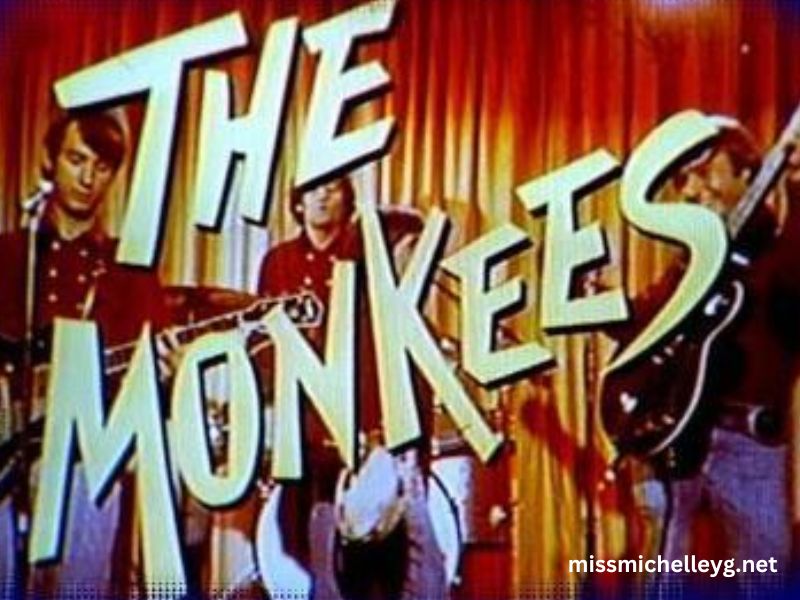The Monkees TV show, a 1960s pop culture phenomenon, not only entertained viewers with its catchy tunes, quirky storylines, and hilarious antics, but it also made an indelible impact on television history. One of the most memorable and iconic elements of this beloved series is the closing picture that appears at the end of every episode. This image, often seen in the final moments of the show, carries a distinct meaning and continues to evoke nostalgia among fans.
In this article, we will explore the significance of the closing picture of The Monkees TV show, its impact on the legacy of the series, and how it reflects the themes of the show. Whether you’re a longtime fan or someone just getting introduced to the world of The Monkees, this article will provide a detailed look at this iconic television moment and its lasting influence on pop culture.
The Monkees TV Show: An Overview of the Cultural Phenomenon
Before diving into the specifics of the closing picture, it’s important to understand the context of The Monkees TV show itself. Originally aired from 1966 to 1968, The Monkees followed the fictionalized lives of a four-member pop band consisting of Micky Dolenz, Davy Jones, Peter Tork, and Michael Nesmith. Modeled after The Beatles’ success in television and film, the show was designed to capitalize on the popularity of the music genre during the mid-1960s.
The Monkees were depicted as a goofy, lovable rock band, embarking on various comedic adventures and hijinks, often in surreal and absurd settings. The show became a hit, attracting a young audience eager to watch the band’s antics, and its success also helped fuel the musical career of The Monkees, whose albums and singles hit the charts in the U.S. and abroad.
The show’s creative, often slapstick style, combined with its surreal humor and use of pop music, set it apart from other sitcoms of the era. But one of the most memorable features of the series was its distinct, recurring visual motif: the closing picture.
What Is the Closing Picture?
The closing picture of The Monkees TV show is a final shot that appears at the end of every episode, typically after the episode’s resolution. It is a still image, often shown as part of the credits sequence, which typically features one of the band members in a humorous or iconic pose. This picture would sometimes be absurd or surreal in nature, providing a playful and whimsical conclusion to the episode.
While the specific image may vary from episode to episode, the general tone of the closing picture is consistent with the lighthearted and comedic nature of the show. Some images feature the Monkees in classic poses or funny situations, while others playfully subvert expectations or add a surreal visual element to the ending.
The closing picture serves as both a signature touch for the show and a lasting visual cue that fans can associate with The Monkees. It also encapsulates the absurd, playful spirit of the series, leaving a lasting impression on viewers.
The Significance of the Closing Picture
The closing picture in The Monkees TV show isn’t just a random or decorative image. It carries deep significance, reflecting both the themes of the series and the broader cultural context of the 1960s. Let’s explore some of the reasons why the closing picture became such an iconic part of the series.
1. Reinforcing the Show’s Surreal Humor
The closing picture often encapsulated the bizarre and surreal humor that defined The Monkees TV show. Viewers could expect the closing image to defy conventional logic or create a playful contrast to the episode’s narrative. For instance, some episodes might end with a picture of one of the Monkees trapped in a silly or unlikely situation, reinforcing the chaotic tone of the series.
By having these eccentric and exaggerated moments captured as a still image at the end of each episode, the closing picture highlighted the absurdity that was central to The Monkees’ comedic identity. Whether it involved over-the-top facial expressions, impossible scenarios, or exaggerated visual gags, the closing image provided a final punchline that was sure to leave audiences laughing.
2. The Iconic Nature of the Band’s Visual Identity
The Monkees’ image as a pop band was defined not just by their music but also by their visual presence. The closing picture was a way to solidify their role as both actors and musicians within a visual medium. The band’s image was meant to be iconic and immediately recognizable, and the closing picture played a key role in this.
The Monkees’ brand of comedy was often linked to the group’s visual aesthetic, and the closing picture reinforced this by showcasing the band in a variety of playful or exaggerated poses. As a result, the image became ingrained in the public’s consciousness, serving as a reminder of the band’s visual flair and their ability to entertain audiences not just through music but through visual comedy as well.
3. Subverting the Traditional TV Ending
In the 1960s, TV shows typically ended with a resolution of the plot, followed by the rolling credits. However, The Monkees took a different approach by introducing the closing picture as a way to defy traditional storytelling conventions. The still image would often feel disconnected from the narrative that had just unfolded, breaking the fourth wall in a humorous and self-aware way.
This approach subverted the expectation that TV shows had to follow a rigid format. It reflected the countercultural atmosphere of the 1960s, a time when young people were challenging established norms and conventions. The closing picture, with its surreal and sometimes nonsensical nature, embodied the rebellious spirit of the era.
4. A Signature of the Show’s Legacy
Over time, the closing picture became a signature element of The Monkees TV show. It stood as a visual hallmark, immediately associated with the show’s playful spirit. Fans of the show, upon remembering the series, would often recall the closing picture as one of its defining features.
The image became so iconic that it transcended the show itself. It was referenced in various forms of media, homaged in other TV shows, and even incorporated into the Monkees’ promotional material. It was a simple yet effective way to ensure that The Monkees TV show left a lasting visual mark on pop culture.
The Cultural Impact of The Monkees’ Closing Picture
The Monkees TV show was an important part of 1960s pop culture, and its closing picture plays a vital role in understanding the lasting impact of the series. By providing a snapshot of the band’s zany adventures, it encapsulated the spirit of the time and resonated with a generation of viewers.
The closing picture became a symbol of lightheartedness, fun, and rebellion. It reflected the emerging counterculture of the 1960s, particularly in the way it subverted traditional television tropes. Fans of the show, both then and now, continue to appreciate the image for its humor, absurdity, and the joy it brought to the screen.
Conclusion
The closing picture of The Monkees TV show is much more than just a final shot at the end of each episode. It’s a visual representation of the show’s unique brand of humor, its cultural significance, and its enduring legacy. Through these playful and often surreal images, The Monkees cemented themselves as a pop culture phenomenon and created a visual signature that would remain iconic for decades to come.






